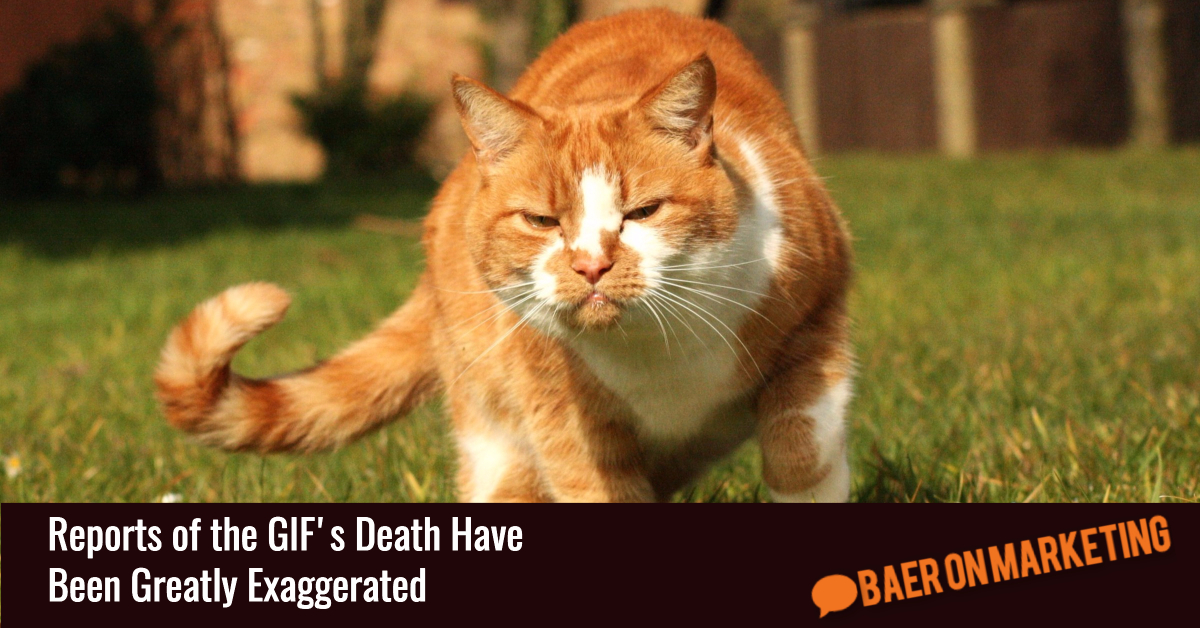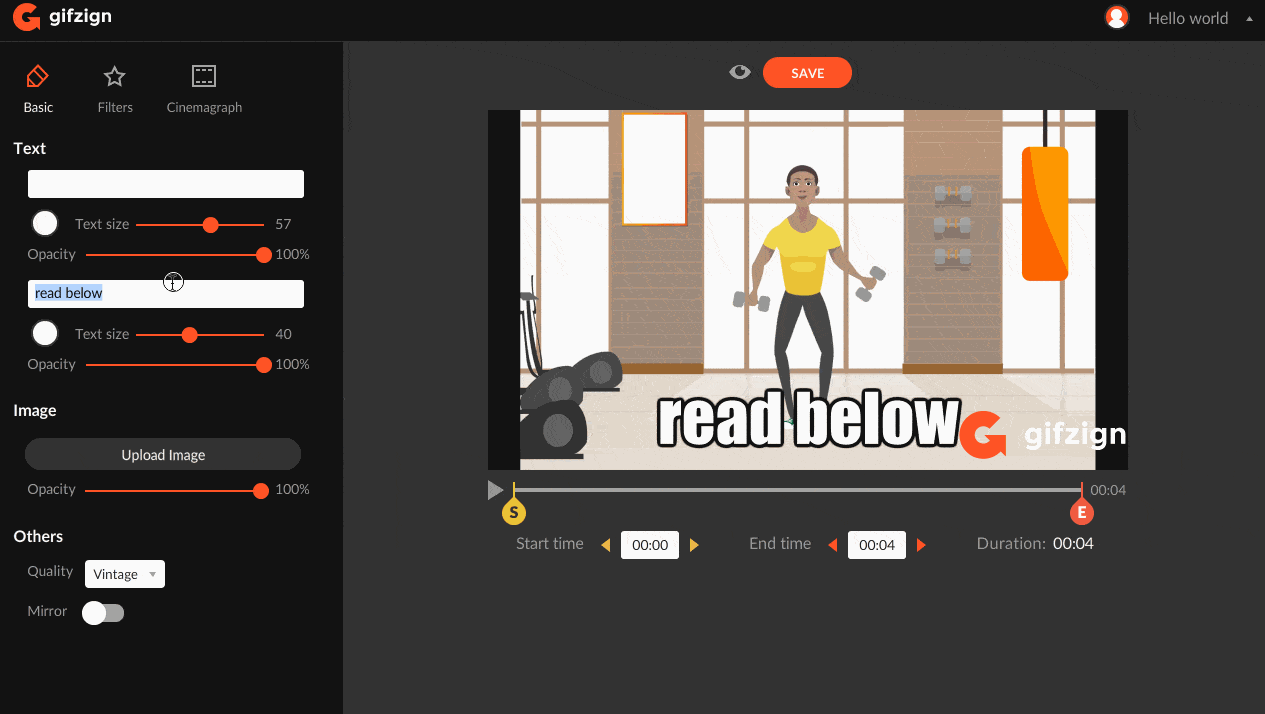
It may seem hard to imagine now, but back in 1999, about twelve years after CompuServe first developed the GIF (Graphics Interchange Format), internet users across the globe staged a revolt. Following a five-year dispute about the patent behind the image type, developers staged a Burn The GIF campaign, and a new file format called PNG started to emerge.
But that all ended in 2004, when the patent expired. And now, it seems, GIFs are here to stay.
In fact, these days, they are bigger than ever.
No longer are they about dancing babies…
Today's GIFs come in all shapes and sizes
According to a 2015 New York Times article…
• 23 million GIFs are posted to the Tumblr platform each day
• 5 million GIFs are exchanged via Facebook Messenger daily
• here are over 2 million GIF interactions take place on Slack every month
And that's not to mention how big brands like Amazon and Netflix are using them.
GIFs are powerful communication tools
What makes GIFs work so well is that they are moving images that your command attention. Simple still images don't provide that extra visual flirtation that a GIF can.
And… because they are basically a series of individual images or frames which are grouped together in a single file without any sound, they are more compact than videos.
Consider the notion that a picture is worth a thousand words… well then, according to the logic of Giphy CEO Alex Chung, we can all expect that a 60 frame GIF is worth 60,000 words.
If you think about it, this concept was pretty much the basis for the early films shown in kinetoscopes at nickelodeons:

They have staying power
And it's pretty clear that GIFs are not going away anytime soon.
In a 2017 visual content marketing roundup, HubSpot declared that visual content is over forty times more likely to get shared on Social Media than other types of content. So it’s not surprising to see big companies using GIFs. For example, Coca-Colla and Disney each have their own Tumblr blogs packed with branded GIFs.
But here's a shocker (or maybe not): NASA uses GIFs of satellite images.
And, these days, it probably won't surprise you to learn that GIFs are even getting in on the Infographic scene:
You'll also see GIFs used more and more frequently in email campaigns. For example, I use them to demonstrate urgency with countdown timers
[monkeytools msnip=”https://countdownmonkey.com/counter/2397/9049s.js”]And when Dell used GIFs in an email campaign for the first time, they saw impressive results:
• 6 percent increase in open rate
• 42 percent increase in click rate
• 103 percent increase in conversion rate
• 109 percent increase in revenue

Making your own GIFs
So now that we know how effective GIFs can be, the next logical question is “how do you create a GIF?”
There are many tools on the market, from Photoshop to Giphy, GifMaker, and dozens more. Most are simple, web-based solutions that allow you to upload a movie file and convert it into a short, 5 second GIF. But many have limitations of time or lack of transparent backgrounds. And, in using several of these platforms, I've found myself having to cobble together elements of two or three of them at a time in order to produce my final GIF.
But in early 2017, I got bet access to a new tool, called GifZign, which has changed the way I've created GIFs.
In less than 10 minutes I churned out this simple collage of screen captures from my GROW software.

And, after a quick YouTube search, I found a clip of this stunning waterfall scene that I was able to import directly into GifZign and then embed into a cute little mockup frame (one of many inside the software) using a new technique known as cinemagraph, where I was able to select sections of the image to keep moving, while the rest of it remained still.

GifZign is a desktop software designed for both Mac and PC. It's highly intuitive, very user friendly (unlike some of the tools I've used online, this one doesn't require any advanced technical skills).
Inside the platform you can upload a MP4 video, record a screenshot, or import a video from either YouTube or Vimeo… and then get to work on designing your GIF.

The whole process is super simple, and you can be churning out smart looking GIFs in no time.
The folks who developed GifZign are masters at image editing software (they also created the Photoshop-killer, YouZign, which I use almost daily), and they have an awesome support team. I expect their GIF creator to continue offering new and advanced features far beyond what most others in the space have to offer.
If you are looking for a way to incorporate GIFs into your communications and marketing, GifZign is at the top of my recommendation list.
